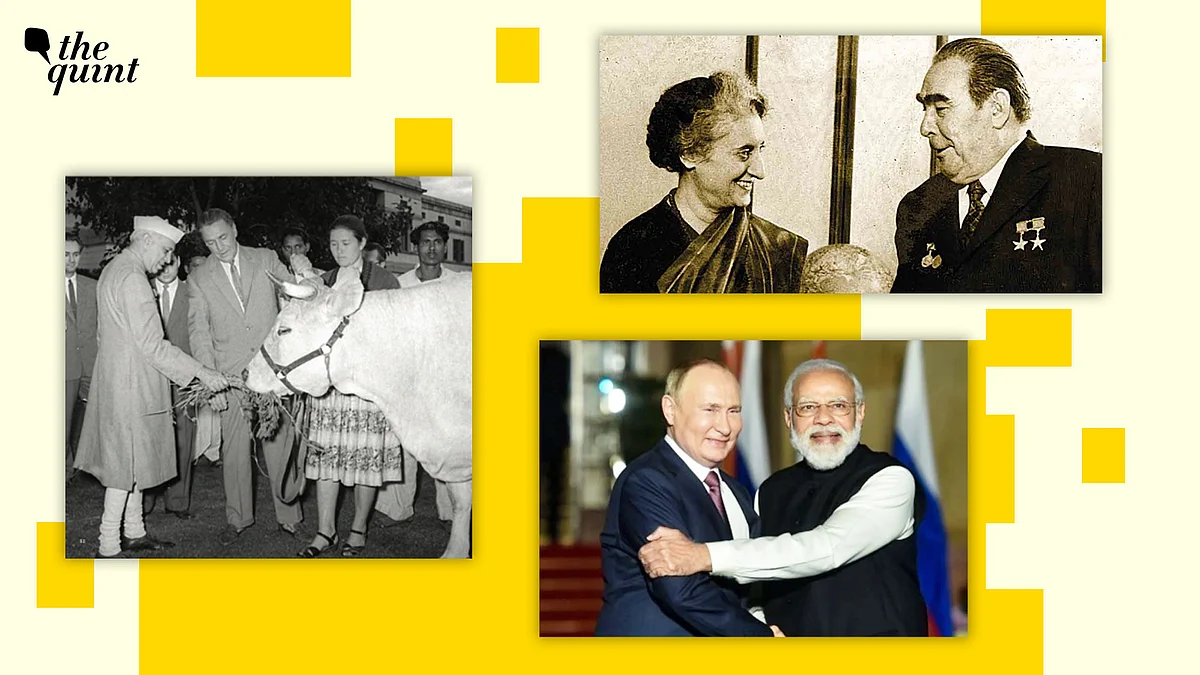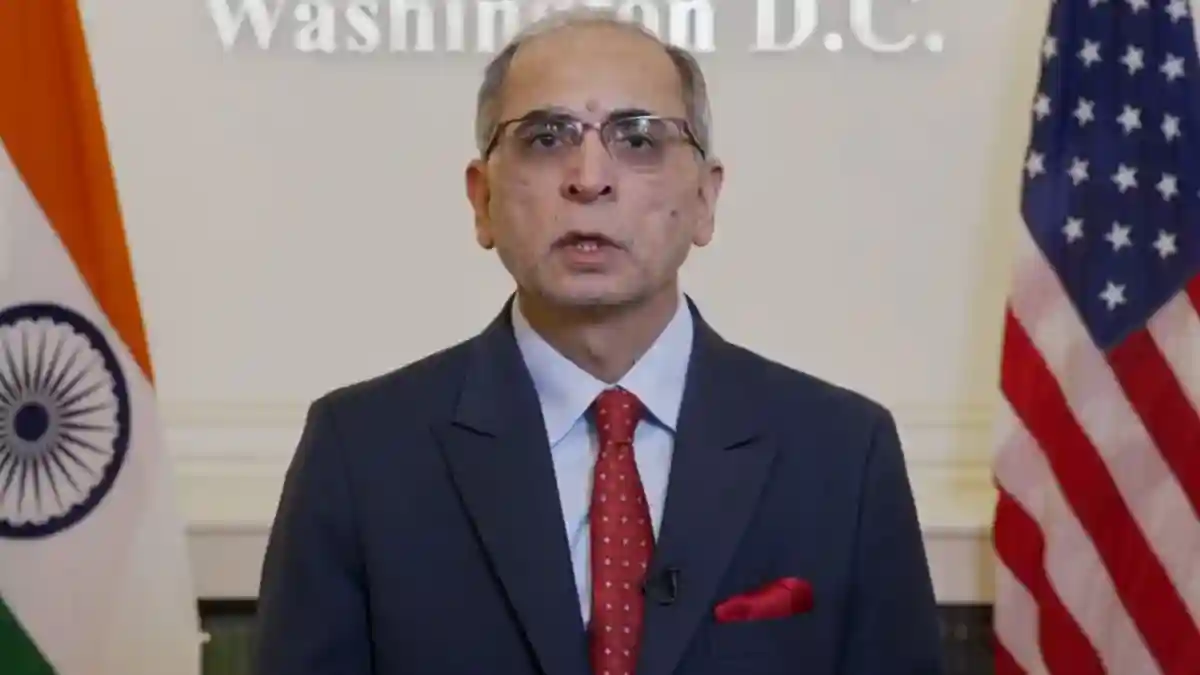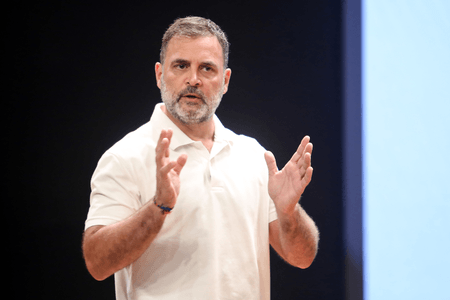By Manoj Joshi
Copyright thequint

One of the striking aspects of the post-World War II geopolitics has been the India-Russia (formerly the Soviet Union) relationship. Countries like China, the US, and Russia itself have alternated between being each other’s friends and enemies in the last seventy years, but the India-Russia relationship has been solid. Indeed, if we are to go by recent developments, it is set to become even more consequential.The most important element of their relationship was geopolitical congruence. India has not condemned the Russian invasion of Ukraine. This had an echo of the Indian refusal to condemn the Soviet invasions of Hungary (1956), Czechoslovakia(1968), and Afghanistan (1979). The Soviets supported India’s annexation of Sikkim and actually aided the Indian military in their war for liberating Bangladesh. Essentially, Russia has more or less tailed India in South Asia, just as India backed Russia in Eastern Europe and the Caucasus.Besides its desire to maintain power in Eastern Europe, the Soviet Union’s main focus was its Cold War with the US which took place in various theatres like the Caribbean (Cuba), in southern Africa, Indo-China, and eventually Afghanistan. As for India, being an economically and militarily weak country, its effort was to transform its economy through the chosen strategy of industrialisation from above. Its primary security interests lay in South Asia and the Indian Ocean Region was largely defensive. By supporting India on the issue of Kashmir, the Soviet Union took sides on the key Indian conflict—that with Pakistan which had become a military ally of the United States in 1954. Subsequently, the Soviet Union and China fell out which was to the advantage of India whose border conflict with China was heating up in the late 1950s and early 1960s.Soviet help had transformed China. According to John Garver the Soviet assistance to China’s socialist industrialisation effort “was one of the largest transfers of capital equipment in history.” Since a large focus was on building Chinese military power, the Soviets transferred technology of their latest fighters, submarines, tanks, artillery and ballistic missiles. The Soviets had no concept of Intellectual Property Rights (IPR) and their transfer actually kick-started Chinese industrialisation.India hoped for something similar, but though it got substantial Soviet aid, the process did not quite work out like China. And the main advantage of Soviet assistance was in the military side. India benefited by being able to get the licence production rights for MiG-21 fighter. The British refusal to give us submarine technology led to the Soviet supply of the first of the Foxtrot class submarines. In 1971, a largely Soviet supplied arsenal helped India to win the Bangladesh war. More importantly, the Indo-Soviet Treaty of 1971 provided India with a defensive cover against the US which had adopted a hostile stance against India during the Bangladesh crisis.When Indira Gandhi returned to power in 1980, she was acutely conscious of the need to move away from the Soviets, who had in December 1979 invaded Afghanistan. Indira believed that the political uprising against her in 1975 that led to the Emergency had had CIA support. She wanted to assure the US in 1980 that things had changed. Indian arms purchases were diversified to France (Mirage 2000) and Germany (HDW submarine) and in her meeting with President Ronald Reagan at Cancun in 1981, she signalled the Indian desire to adopt a truly non-aligned posture. A month after her assassination, India and the US signed the Gandhi-Reagan Science and Technology Initiative.The Americans did not want to upset their Pakistani allies, so they did not position themselves as Soviet rivals. So, they came across as a country willing to back Indian S&T endeavours that would lead to the growth of domestic military and civil industry. In 1987, for example, they approved the use of the GE-404 jet engine for India’s Light Combat Aircraft project.Grievously wounded by their Afghan war and an economy that was failing, the Soviets redoubled their efforts to keep India on their side. They now offered a range of their latest weapons and systems—MiG-29 fighters, T-72 tanks, Infantry Combat Vehicles, Kilo class submarines, Kashin II (Rajput)-class destroyers and so on. And all these at so-called friendship prices which simply could not be matched by any other power. In the 1980s, the Indian military re-equipped itself and became a formidable force, though its effectiveness was blunted by the outbreak of a terrorist movement in Punjab and an insurgency in Jammu & Kashmir. But it did manage to persuade China to talk peace on the LAC and the two countries signed agreements to maintain peace and tranquillity between them.India-Russia Relations Under Modi 3.0 Are Here to Stay and Even DeepenThe collapse of the Soviet Union was a geopolitical disaster for India. At one stroke its principal Great Power supporter had been laid low. The event came hard on the heels of India’s own domestic political and balance of payments crisis. India came under intense American pressure on the issue of Kashmir, as well as its nuclear programme. But with some good diplomacy it was able to fend off the challenge. Another geopolitical development came to India’s aid—in June 1989 the Tiananmen massacre led to an estrangement between the US and China. What was appearing to be a quasi alliance now came apart amidst mutual recrimination.The US began to look to India as a potential partner, if not ally. Russia was down and out and remained so through the 1990s and things only changed after Vladimir Putin took power in May 2000. All this coincided with India signing the deal to manufacture 140 Sukhoi 30MKI aircraft, a derivative of the frontline Su-27 in Russia. In 2002, ground breaking for the Kudankulam nuclear power project was conducted. In 2004, the two sides began testing the Brahmos supersonic cruise missile which came into service some years later. In 2009, the INS Arihant, India’s first nuclear propelled ballistic missile submarine, built to a Russian design was commissioned.From the mid-2000s onwards, India developed significant ties with the United States following the Indo-US nuclear deal of 2005, as well as a string of military agreements to promote co-operation between the two countries. But this did not affect Russia too much.There were three reasons for this. One was that what the Russians offered by way of military technology—Brahmos class missiles, nuclear propelled submarines—would simply not be available from the US. The second was that the area of Indo-US focus was the Indo-Pacific and did not really affect India’s ties with Russia. Moscow continued to back India in its Pakistan policy, as well as in the Indian Ocean Region. The third was that the Russians themselves were getting closer to the Chinese and did not feel overly concerned about New India’s shift.But New Delhi did realise that it needed to upgrade its Russian ties if it wanted to have a balanced policy. So in 2000, in collaboration with Iran, another important Indian partner in West Asia, they pushed the International North South Transport Corridor (INSTC) to promote greater economic ties with the Eurasian landmass. But progress has been slow. However, Russia’s Ukraine war has changed things. Facing sanctions from Europe, Russian oil was available at a discount. India went for it and it sharply increased its purchase of Russian oil.India’s trade with Russia was a meagre $13 billion in 2021. But by 2024 it had reached $69 billion of which $57 billion was Russian crude oil imports.India sees considerable value in developing energy ties with Russia and in addition to purchases of crude, it is also a major investor in Russian energy sector. In addition to the INSTC, India is seeking to promote the Chennai-Vladivostok maritime corridor to promote trade in energy and commodities. A significant development is the Russian search for alternative markets following their difficulties with Europe. The INSTC and Chennai-Vladivostok corridor can play a major role in transforming India-Russia relations in the future.(The author is a Distinguished Fellow, Observer Research Foundation, New Delhi. This is an opinion piece and the views expressed are the author’s. The Quint neither endorses nor is responsible for the same.)6 More Years for Vladimir Putin. What it Means for India-Russia Ties



